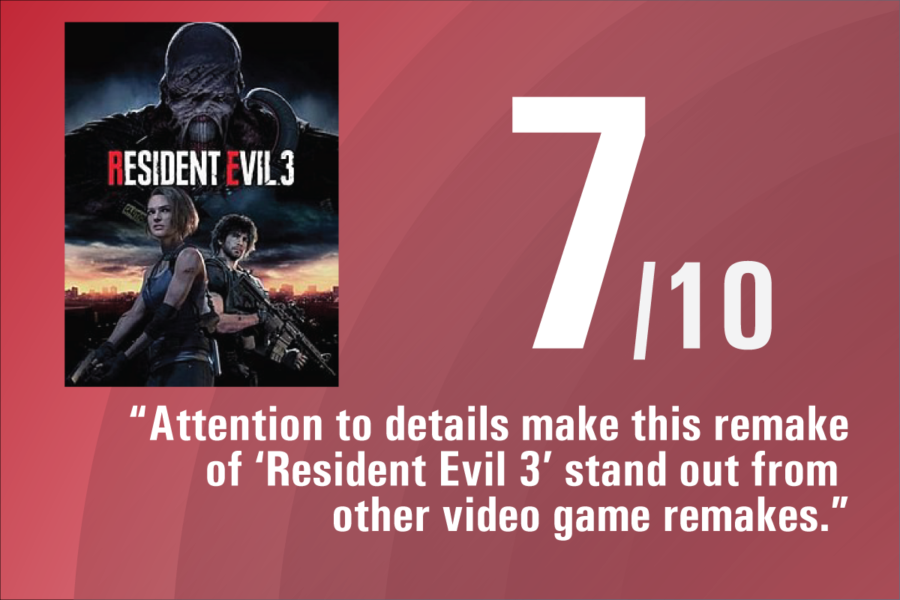Capcom delivers remake satisfaction again with ‘Resident Evil 3’
April 9, 2020
The 2020 remake of “Resident Evil 3” brings cinematic graphics and modernized characters to a nostalgic series.
Originally released Sep. 22, 1999, for the PlayStation, “Resident Evil 3: Nemesis” garnered glowing reviews from multiple critics. The engrossing experience made the game a modern classic for the period, and its original game certainly made an influential impact on the “Resident Evil” series.
After 2019’s popular “Resident Evil 2” remake, fans were immediately clamoring for a remake of its direct sequel. Capcom, the series producer, has delivered once again on this remake.
Due to the many technological advances since the original PlayStation, the 2020 remake of “Resident Evil 3” provides an enhanced graphical experience. The cinematic cutscenes occasionally make it difficult for players to tell that they are watching something computer generated and not something filmed live.
Attention to details make this remake of “Resident Evil 3” stand out from other video game remakes. Players have the ability to choose different outfits for playable characters, Jill Valentine and Carlos Oliveira, in order for them to match what they wore in the original 1999 game. Additionally, this remake follows the classic “Resident Evil” tradition of having collectable hidden bobble-head figurines for players to find throughout various locations.
Fans were arguably most looking forward to the return of the titular character known as “Nemesis” in this 2020 remake. While his design in the 1999 “Resident Evil 3” was terrifying to players back in the day, the immensely improved graphics and sound design from the 2020 remake only make him more horrifying. Nemesis’ first appearance happens very early and very suddenly in the game. Players must hit the ground running in order to survive Nemesis’ endless pursuit.
While the positives outshine the negatives, there are still drawbacks that should be acknowledged. A few sequences of game play stand out for the wrong reasons. Such examples include tedious and repetitive gameplay that goes on for too long, Nemesis mostly being reserved for cutscenes instead of live gameplay and the seldom appearance of classic “Resident Evil” puzzles. Most items and weapons that must be obtained for players to advance in the story are usually achieved by fighting off hordes of repetitive enemies, making the absence of challenging puzzles very noticeable.







